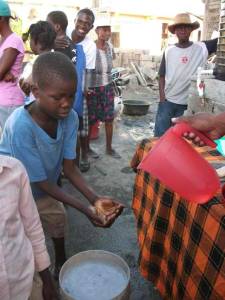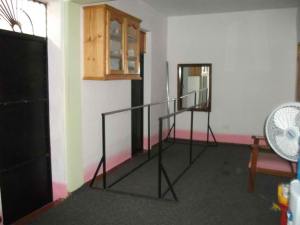Attendees: Dr. Jasmin Ministry of Health, Axnick Woody Paul, Ministry of Planification, UN, Oxfam, MSF, WHO, UNICEF, Cap Haitien Health Network
Two teams: planning and prevention
Update from Dr Jasmin re current situation with cholera epidemic840 cases, 57 deaths in Limbe, Cap Haitien, Plaisance, Bornge, Portmago
46 cases in Milot
?data for Quatier Morin
A lot of problems with treatment in Cap Haitien, Limbe – with regards to capacity because all surrounding communes bring their cases to Cap and Limbe.
There are increasing deaths in these communities –entire families are being wiped out.
Problem with lack of transportation and security at night
Two main issues: treatment and awareness
Issues re corpses
Important to discuss the issues: no plan, no contact
MSPP and WHO training has focused on health so it’s important to make an integrated plan to ensure the training is carried out in rural communities and with other partners. WHO don’t have enough capacity to cover all the areas, therefore they aim to focus on the health human resources. So they need other partners to duplicate the training to others rein schools and churches.
It’s very important to determine the area where the departments are going to be deployed. E.g. Oxfam have the training tools for cholera, but cannot cover all areas.
OXFAMHave two teams on the field: to make intervention in different areas of Cap. E.g. Shada to implement chorination of water. Oxfam team begin to treat water with SNEP (gov. recommendation for water treatment). Gov and Oxfam working together to treat the water and implement training, once the needs assessment has been completed (tomorrow).
Comment: important to integrate all the actions of all the partners.
Smaller organisations are providing training and education in schools, churches etc but we have little information about their roles and therefore leads to difficulties integrating work.
No one is taking whole responsibility to train those in churches, schools. Difficult to remove staff away from clinical areas to provide training.
Other areas of concern is the potential increase of cases in private clinics. It’s very important to stop the rapidity of the epidemic, therefore it is very important to make plans and support the hospitals/health services that are accepting these patients.
We need to know which players will do something re sanitization so we can plan for those areas not already covered.
Next week the Ministry of National Education are planning some training with school teachers around Cap Haitien. We need to know exactly which schools this training will happen in.
MoP: health NGOs can help with sanitizationn e.g. education, transportation, logistics – want training to be completed by creole-speaking trainers only – not through translators as risk of poor accuracy of message.
Plan for communication in the mass media:
MoH has produced a series of educational promotion in TV, local radio, but many people don’t have access to these media. Starting megaphone campaign.
Mr Woody Paul (MoP) is planning to meet with the pastors in the region re education through churches
WHO: emphasizes again the importance of managing the deceased as they are also a risk of infection for others. Scouts cover the whole of the country. They can be used to continue the messages re sanitization.
Suggestion: to ask the community leaders and pastors to take control of their own communities re organizing appropriate sanitization
Oxfam: important to make sure training is effective to allow for continuity and accurate dissemination of information. Would like to provide ‘train the trainer’ programs. For this need no. to target, training tools, enough fliers. Suggest 30 persons for this role.
Training for: The scouts, the schools, the churches
CorpsesNormally private organisation that provide this, although they are reluctant to receive cholera contaminated corpses. Therefore it is important to work with government, mayor etc to ensure this issue is dealt with.
For meeting with all organizations with this problem. At present, to use the religious leaders to give the message that dead bodies are very contagious.
Important to set up cholera centre: possible near airport (as well as gymnasium). Many other services are now being stopped e.g. maternity to meet the demand of the cholera.
ActionsOxfam and Scouts to meet re training
Mayors of the north will be meeting on Monday at Delegation du Nord – to disseminate information to their own communities
IOM to meet with community workers on Tuesday
10-2 tomorrow – meeting of all international radio stations with Ministry of Health
Two cluster groups formed:
Health – WHO, MSF, Dept of Health
Water and sanitation – OXFAM and UNICEF






































